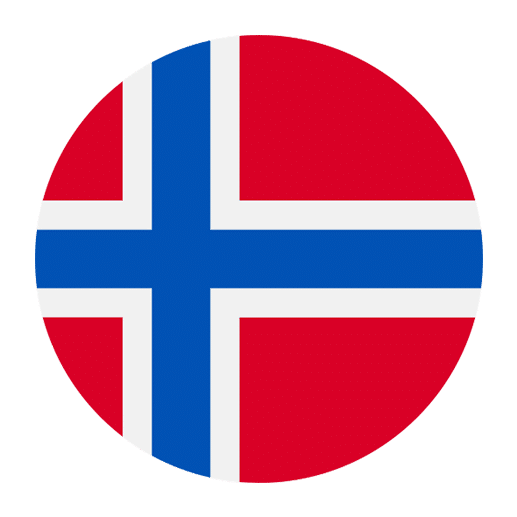Learning a new language can be both exciting and challenging. For English speakers venturing into the world of Norwegian, flashcards can be an incredibly effective tool. This article will delve into the best practices for using Norwegian language flashcards, ensuring you maximize your learning potential and achieve fluency faster.
The Basics of Flashcards
Flashcards are a time-tested method for memorizing vocabulary, phrases, and even grammatical rules. They are portable, customizable, and versatile, making them ideal for language learners. At their core, flashcards consist of two sides: one with a word or phrase in the target language (Norwegian, in this case) and the other with the equivalent in the learner’s native language (English).
Why Flashcards Work
Flashcards leverage the psychological principles of active recall and spaced repetition. Active recall involves actively stimulating memory during the learning process, which strengthens neural connections. Spaced repetition is a technique where flashcards are reviewed at increasing intervals, optimizing retention and minimizing forgetting.
Creating Your Norwegian Flashcards
1. Choose the Right Materials:
Begin by selecting a reliable source for your vocabulary and phrases. This could be a textbook, language app, or online resource. Ensure the material is accurate and relevant to your learning goals.
2. Digital vs. Physical Flashcards:
Decide whether you prefer digital flashcards (using apps like Anki or Quizlet) or physical ones. Digital flashcards offer the advantage of automatic spaced repetition and the convenience of carrying your entire deck on a smartphone. Physical flashcards, on the other hand, provide a tactile learning experience that some find more engaging.
3. Quality Over Quantity:
Instead of overwhelming yourself with hundreds of flashcards at once, focus on a manageable number. Start with 20-30 new cards and gradually add more as you become comfortable with the existing ones.
4. Include Context:
Whenever possible, include a sentence or phrase that uses the word in context. This not only aids in understanding but also helps in learning how to use the word naturally.
5. Use Visuals:
For physical flashcards, draw pictures or symbols to represent the word or phrase. For digital ones, incorporate images. Visuals can help reinforce memory and make the learning process more enjoyable.
Effective Techniques for Using Flashcards
1. Daily Review:
Consistency is key. Set aside a specific time each day for reviewing your flashcards. Even 10-15 minutes can make a significant difference over time.
2. The Leitner System:
This method involves sorting flashcards into different boxes based on how well you know each one. Start with all your cards in Box 1. If you recall a card correctly, move it to Box 2; if not, keep it in Box 1. Cards in higher-numbered boxes are reviewed less frequently, aligning with the principles of spaced repetition.
3. Active Engagement:
Avoid passively flipping through your flashcards. Engage with each card by saying the word or phrase out loud, writing it down, or using it in a sentence.
4. Mix It Up:
Shuffle your flashcards regularly to ensure you’re not just memorizing the order. Randomizing the cards helps reinforce true recall.
5. Test Yourself:
Occasionally, set aside your flashcards and test yourself. Write down all the words and phrases you remember, then check against your cards. This helps gauge your progress and highlight areas needing improvement.
Expanding Your Vocabulary
1. Group by Theme:
Organize your flashcards into thematic groups such as food, travel, family, etc. This helps create associations and makes learning more systematic.
2. Learn Synonyms and Antonyms:
For each new word, find synonyms and antonyms. This not only expands your vocabulary but also deepens your understanding of nuances and context.
3. Incorporate Idioms and Phrases:
Norwegian, like any language, has its own set of idiomatic expressions. Include these in your flashcards to sound more natural and fluent.
Incorporating Grammar
Flashcards aren’t just for vocabulary. They can also be a valuable tool for learning grammar.
1. Verb Conjugations:
Create flashcards for different verb forms. On one side, write the infinitive form, and on the other, list the conjugations for different tenses and persons.
2. Sentence Structure:
Use flashcards to practice Norwegian sentence structure. Write a complete sentence in Norwegian on one side and its English translation on the other. This helps reinforce proper syntax and word order.
3. Gender and Plurals:
Norwegian nouns have genders and specific plural forms. Create flashcards that include the noun, its gender, and its plural form. This aids in memorizing these essential aspects of Norwegian grammar.
Leveraging Technology
In today’s digital age, numerous apps and online platforms can enhance your flashcard experience.
1. Anki:
Anki is a powerful flashcard app that uses spaced repetition to optimize learning. It allows you to create custom decks, add images and audio, and track your progress.
2. Quizlet:
Quizlet offers a user-friendly interface and a variety of study modes, including flashcards, games, and quizzes. You can create your own sets or use those shared by other learners.
3. Memrise:
Memrise combines flashcards with gamification, making learning fun and engaging. It offers pre-made courses with native speaker audio and interactive exercises.
Making Flashcards a Part of Your Routine
Consistency is crucial for language learning. Here are some tips to integrate flashcards into your daily routine:
1. Set Goals:
Determine how many new words or phrases you want to learn each week. Setting achievable goals helps maintain motivation and track progress.
2. Use Downtime:
Carry your flashcards with you and use them during downtime, such as commuting, waiting in line, or during breaks. These short, frequent reviews can significantly boost retention.
3. Review Before Bed:
Studies suggest that reviewing material before sleep can enhance memory consolidation. Spend a few minutes with your flashcards before going to bed.
4. Involve Others:
If you have friends or family members learning Norwegian, study together. Quiz each other using flashcards and practice speaking. Teaching others is also a powerful way to reinforce your own learning.
Common Pitfalls and How to Avoid Them
While flashcards are a fantastic tool, there are common mistakes that can hinder your progress:
1. Overloading Yourself:
Avoid trying to learn too many new words at once. It’s more effective to master a smaller set of vocabulary thoroughly than to skim through a large set superficially.
2. Neglecting Review:
Regular review is essential. Don’t just focus on new cards; make sure to revisit older ones to keep them fresh in your memory.
3. Passive Learning:
Simply flipping through flashcards without active engagement won’t be as effective. Make sure to actively recall, use the words in sentences, and speak out loud.
4. Lack of Context:
Memorizing words in isolation can be challenging. Whenever possible, learn words in context and include example sentences on your flashcards.
Beyond Flashcards: Complementary Techniques
While flashcards are an excellent tool, they should be part of a broader language learning strategy. Here are some complementary techniques:
1. Immersion:
Surround yourself with the Norwegian language. Listen to Norwegian music, watch movies and TV shows, and read books or news articles. Immersion helps reinforce what you’ve learned and improves listening and comprehension skills.
2. Speaking Practice:
Practice speaking with native speakers or fellow learners. Language exchange partners, tutors, or conversation groups can provide valuable practice and feedback.
3. Writing Practice:
Keep a journal in Norwegian. Write about your day, your thoughts, or any topic of interest. This helps reinforce vocabulary and grammar.
4. Language Apps:
Use language learning apps that offer interactive exercises, quizzes, and games. Duolingo, Babbel, and Rosetta Stone are popular options.
5. Cultural Exposure:
Learn about Norwegian culture, traditions, and customs. Understanding the cultural context can make language learning more meaningful and enjoyable.
Conclusion
Using Norwegian language flashcards effectively can significantly enhance your learning experience. By creating well-structured flashcards, incorporating them into your daily routine, and complementing them with other language learning techniques, you can achieve fluency more efficiently. Remember to stay consistent, engage actively, and enjoy the process. With dedication and the right strategies, you’ll find yourself speaking Norwegian with confidence and ease.

